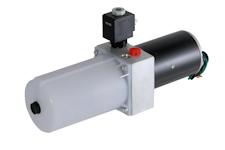Hydraulic power packs have indeed proven their value in many different industries, and if you do not have access to a stable power source to run particular pieces of equipment, you can definitely utilise the power produced by a hydraulic power pack or unit. The best aspect about hydraulic power packs is that they are completely portable, making them versatile and convenient to use, and you can choose different sizes and designs – and even have one fully customised according to what you need. But hydraulic power packs will also have different components, and these components are essential to the overall functionality and performance of a unit. Unfortunately, components can wear out and even become damaged, so if you want your components – and your entire hydraulic power pack – to last, you need to know what to avoid when using your hydraulic power pack or unit. Here are the top ways your hydraulic components can be worn out or damaged – and how to prevent or avoid them.


- Too much abrasion
Abrasion causing wear and tear is pretty common, and it often involves the scoring or scuffing of a lubricated surface. Your hydraulic components can actually suffer from two forms of abrasion: two-body as well as three-body abrasive wear and tear. In two-body abrasive wear and tear, two surfaces (which are lubricated) come into contact with each other, and this is usually the result of a lack of lubricating oil. Three-body abrasive wear and tear, on the other hand, occurs once the clearance between two surfaces which are lubricated becomes filled by particles that are too hard. When this happens, it isn’t the other surface which causes the abrasion – it is the hard particles scoring the surface and contributing to damage in the long term.
- Damage due to adhesion
This kind of damage is related to two-body abrasive wear and tear. When the film of lubricating oil between the two surfaces that move against each other is worn down or lost, the two surfaces can then begin to scuff against each other. The process of scuffing will then create friction, and this can produce heat. If the heat and friction are too intense, the surfaces may stick together; hence, damage due to adhesion.
- Fatigue and cavitation
Fatigue can be more common in lubricated and heavily-oiled contacts, especially gears and bearings. This can result in deformation on the surface of the component, and it means that the stress can cause the surface to break apart and crack.
Cavitation, on the other hand, can occur if air bubbles or bubbles of oil vapour form at the pump’s inlet pipe. These bubbles will then collapse due to pressure, and once they collapse, they can form microscopic jets that are strong enough to cause erosion even to the toughest and hardest steel.
The thing about wear and tear is that it will happen eventually, but what’s important is to make sure the life of your hydraulic components – and your hydraulic power packs – is prolonged by following the best practices as well as establishing the best security measures.
Image attributed to Hydraproducts.co.uk
https://www.hydraproducts.co.uk/Hydraulic-Power-Packs/Micro-Power-Pack
Leave a Reply